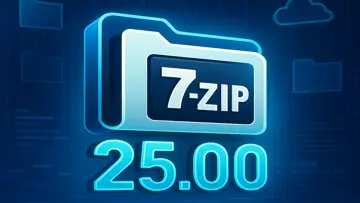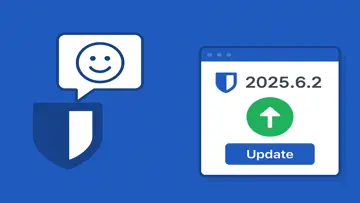Optimize Your Hardware Usage with Hardware Locality
Hardware Locality is a powerful tool that enables efficient management of hardware resources, enhancing application performance by improving locality of reference.
Overview of Hardware Locality by Jeff Squyres
Hardware Locality, often referred to simply as hwloc, is an open-source software project designed to provide seamless access to the hardware topology of computing systems. Developed by Jeff Squyres, a known figure in the high-performance computing (HPC) community, hwloc allows users to discover and manipulate the various components of their computing environment efficiently. This includes CPUs, memory, caches, and various hardware accelerators. With an increasing reliance on hardware diversity in modern computing systems, this tool aims to facilitate better resource management and performance optimization.
Key Features
- Hardware Topology Discovery: hwloc can automatically identify and visualize the underlying hardware architecture of a single node or cluster. This includes hierarchical relationships amongst CPUs, memory, and I/O devices.
- Cross-Platform Compatibility: It is designed to work across various platforms such as Linux, Windows, and macOS. This wide range ensures that users can rely on hwloc regardless of their operating system.
- User-Friendly Visualization: The package includes utilities that create graphical representations of the system’s hardware layout. Users can quickly assess how different components are organized, facilitating better decision-making.
- Support for Multiple Architectures: hwloc offers the ability to work with diverse hardware setups, accommodating different architectures including x86, ARM, and more specialized processors.
- Integration with Other Libraries: The software is designed to be easily integrated with other libraries such as Open MPI and OpenMP. This interoperability makes it highly valuable in distributed computing environments.
Installation and Setup
The installation process for Hardware Locality is straightforward. Users can either build it from source or install it via package managers depending on their operating system. For example, on a Debian-based system, hwloc can be installed using the following command:
sudo apt-get install hwloc
After installation, users can begin utilizing the command-line tools and libraries included in the package immediately.
User Interface and Usability
Hwloc provides both command-line utilities and APIs for various programming languages such as C and C++. The simple command-line interface allows users to run commands like lstopo to generate visual representations of the hardware topology. Below are some common commands:
hwloc-ls: List the hardware topology in a tree format.lstopo: Generate a graphic representation of the topology.hwloc-info: Obtain detailed information about specific components.
The API facilitates deeper integration into applications where fine control over hardware resources is essential. This combines low-level access with high-level usability.
Performance and Benchmarking
The performance impact of utilizing hwloc is minimal; however, understanding the underlying hardware layout can significantly enhance application performance, especially in an HPC context. Users have reported improved application efficiency when leveraging hwloc's APIs for tasks such as resource allocation and data locality optimizations.
Use Cases
The primary audience for Hardware Locality includes developers working within HPC environments, academic researchers performing computational tasks, and system administrators managing large clusters. Some specific use cases include:
- Optimizing MPI Applications: By knowing where processes are located within a multi-node architecture, developers can optimize communication patterns and reduce latency.
- Scheduling Tasks Based on Resource Availability: System administrators can make informed decisions on placement of jobs based on resource availability by inspecting the topology.
- Tuning Data Placement: In-memory data placement can be optimized based on local memory availability when running large data processing tasks.
Documentation and Community Support
The documentation for hwloc is thorough and well-structured, covering installation instructions, API references, user guides, and examples. It is available online and frequently updated to reflect new features or changes in functionality. Furthermore, there is an active community around the project where users can seek help or share insights via mailing lists or forums focused on HPC technologies.
The Hardware Locality tool created by Jeff Squyres serves as an essential resource for those involved in high-performance computing systems. Its ability to map out complex hardware layouts allows for better optimization strategies tailored for modern computational structures. As computing continues to evolve with diverse architectures emerging regularly, hwloc remains a relevant tool in ensuring efficient hardware utilization across all scales of computing resources.
Overview
Hardware Locality is a Open Source software in the category Development developed by Jeff Squyres.
The latest version of Hardware Locality is currently unknown. It was initially added to our database on 11/06/2009.
Hardware Locality runs on the following operating systems: Windows.
Hardware Locality has not been rated by our users yet.
Pros
- Improves performance by optimizing resource allocation based on hardware topology.
- Facilitates efficient scheduling of tasks across different CPU cores and memory hierarchies.
- Enhances support for multi-core and multi-socket systems by providing abstractions that reflect the hardware layout.
- Promotes efficient data locality, reducing memory bandwidth usage and increasing cache efficiency.
- Useful in high-performance computing environments, particularly for applications sensitive to hardware configurations.
Cons
- May have a steep learning curve for newcomers unfamiliar with hardware optimization concepts.
- Requires careful configuration and understanding of the underlying hardware to achieve the best results.
- Limited support for non-standard or less common architectures could hinder usability in some environments.
- Integration with other tools may require additional effort or custom configurations.
- Updates and community support may not be as strong as more mainstream software tools.
FAQ
What is Hardware Locality?
Hardware Locality is a software package designed to describe the physical layout of computing elements in modern high-performance and parallel computers.
Who is the creator of Hardware Locality?
Hardware Locality was created by Jeff Squyres, a recognized expert in the field of parallel computing.
What is the purpose of Hardware Locality?
The purpose of Hardware Locality is to provide a way for applications to understand and utilize the underlying hardware architecture efficiently.
Is Hardware Locality open source?
Yes, Hardware Locality is an open-source software package released under a permissive BSD license.
Can Hardware Locality be used in high-performance computing environments?
Yes, Hardware Locality is specifically designed for use in high-performance and parallel computing systems.
What programming languages are supported by Hardware Locality?
Hardware Locality provides support for C and C++ programming languages.
Is Hardware Locality actively maintained and updated?
Yes, Hardware Locality is actively maintained and updated by its creator and community contributors.
Are there any known limitations of Hardware Locality?
While Hardware Locality is a powerful tool, like any software, it may have limitations depending on the specific hardware environment and use case.
Can Hardware Locality help optimize performance of parallel applications?
Yes, Hardware Locality provides valuable insights into the hardware architecture that can be leveraged to optimize performance of parallel applications.
Is there documentation available for using Hardware Locality?
Yes, comprehensive documentation is available for using Hardware Locality, including guides, examples, and API references.

David Fischer
I am a technology writer for UpdateStar, covering software, security, and privacy as well as research and innovation in information security. I worked as an editor for German computer magazines for more than a decade before joining the UpdateStar team. With over a decade of editorial experience in the tech industry, I bring a wealth of knowledge and expertise to my current role at UpdateStar. At UpdateStar, I focus on the critical areas of software, security, and privacy, ensuring our readers stay informed about the latest developments and best practices.
Latest Reviews by David Fischer
Latest Reviews
|
|
MatheGrafix
MatheGrafix: Revolutionizing Math Visualization |
|
|
Tavoletta Wacom
Elevate Your Creativity with Wacom's Tavoletta |
|
|
CS 3D Imaging Light
Transform Your Imaging Experience with CS 3D Imaging Light |
|
WeiyunApp
WeiyunApp: Efficient Cloud Storage from Tencent |
|
|
|
115生活
Streamline Your Daily Life with 115生活 |
|
Prima Cartoonizer versión
Transform Your Photos into Cartoons with Prima Cartoonizer! |
|
|
UpdateStar Premium Edition
Keeping Your Software Updated Has Never Been Easier with UpdateStar Premium Edition! |
|
|
Microsoft Edge
A New Standard in Web Browsing |
|
|
Microsoft Visual C++ 2015 Redistributable Package
Boost your system performance with Microsoft Visual C++ 2015 Redistributable Package! |
|
|
Google Chrome
Fast and Versatile Web Browser |
|
|
Microsoft Visual C++ 2010 Redistributable
Essential Component for Running Visual C++ Applications |
|
|
Microsoft OneDrive
Streamline Your File Management with Microsoft OneDrive |





